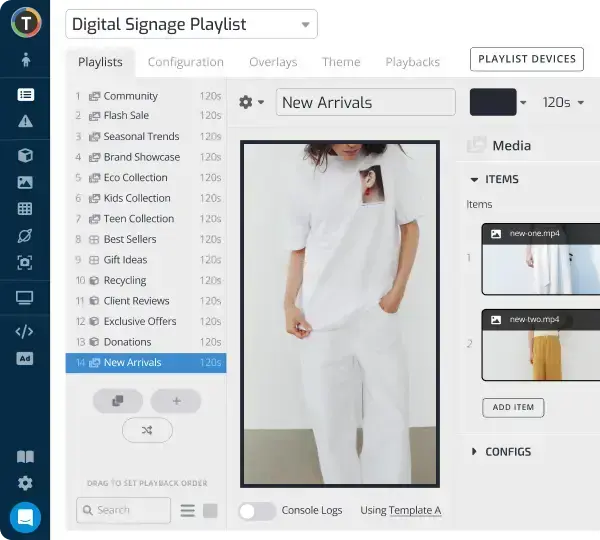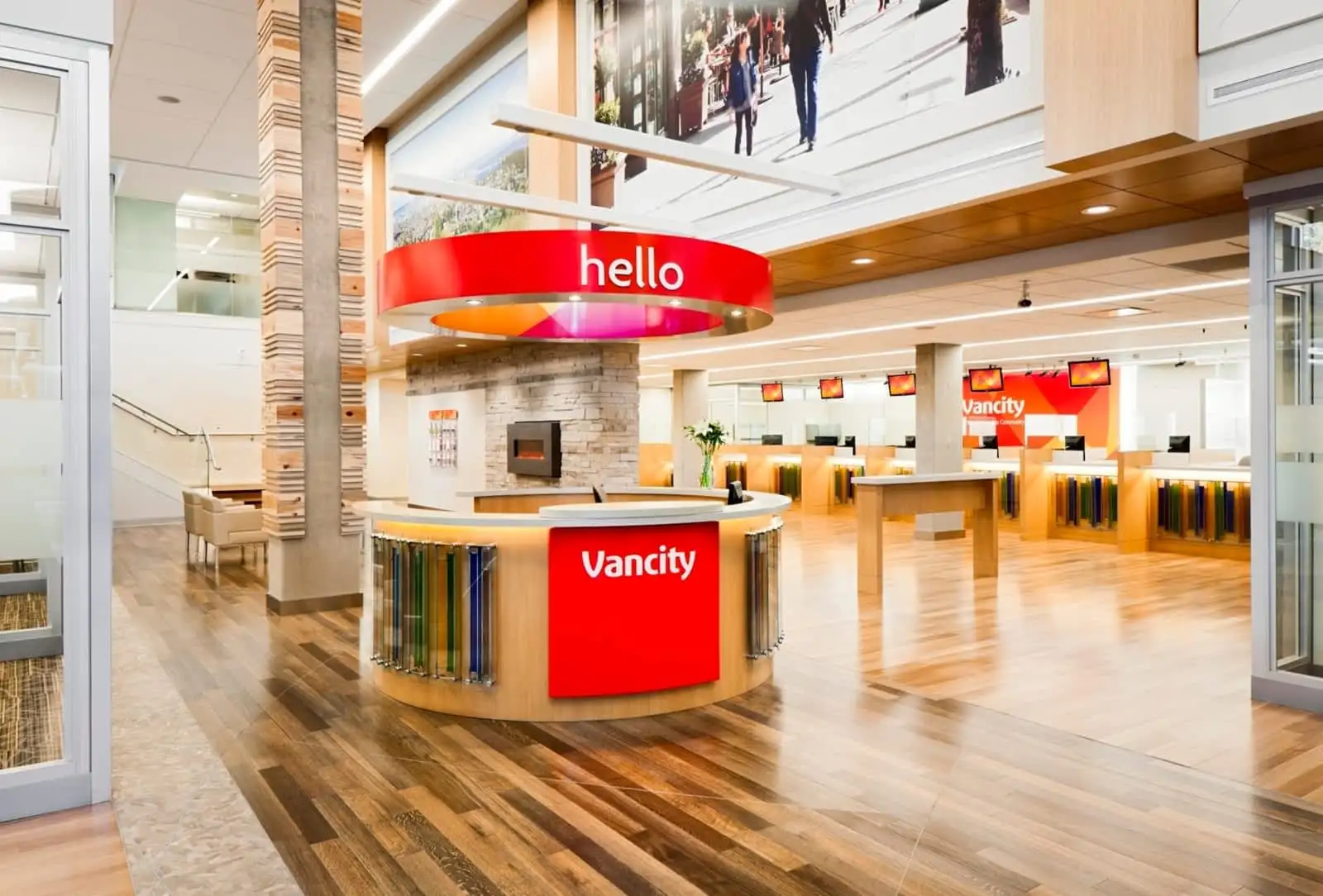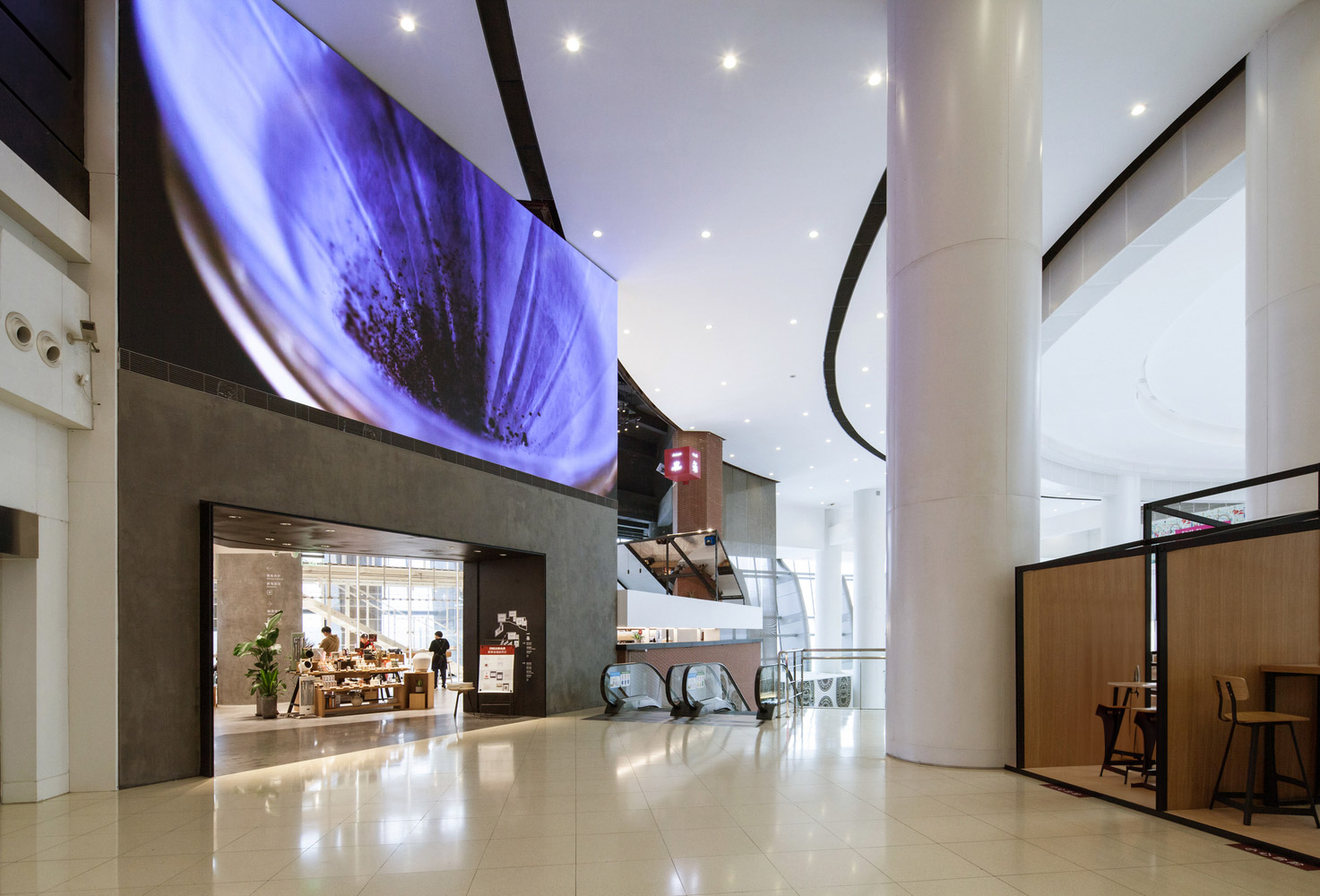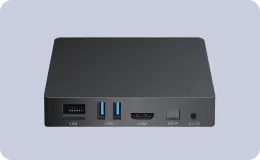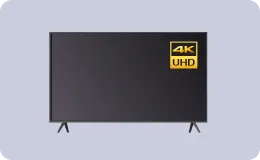Best Digital Signage Players for 2025
WRITTEN BY: TelemetryTV, 02-18-2025
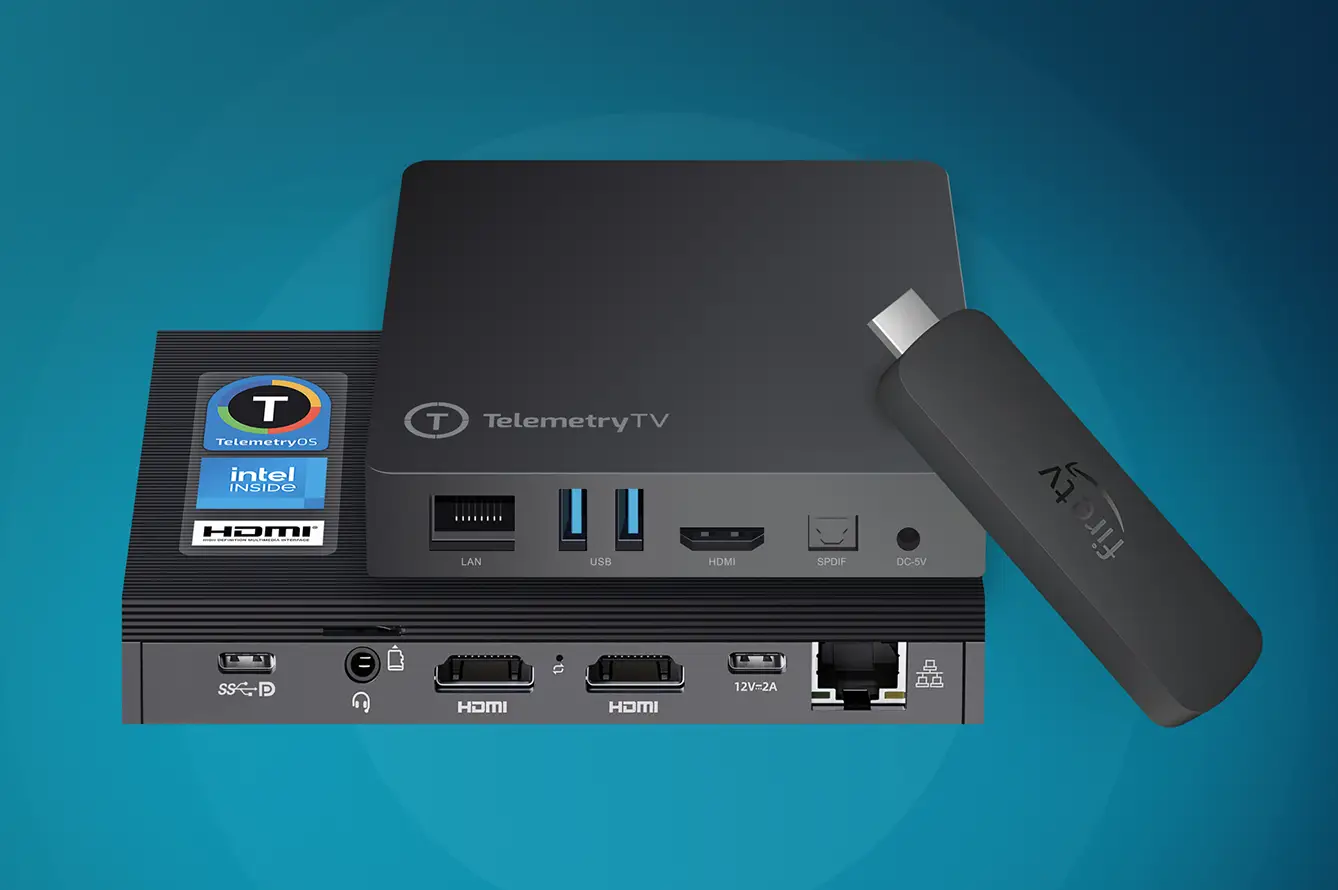
Introduction to Digital Signage Players
In today's visual landscape, digital signage plays a crucial role. It can be seen in vibrant video walls in shopping malls, digital bulletin boards in education, touch screen kiosks in QSR, and corporate screens displaying business metrics.
If you're new to digital signage, the first step is to invest in three key components: a digital signage software solution, screens, and a media player for each display. However, with the rapid evolution of digital signage technology, it can be challenging to determine the best hardware options.
Since its founding in 2015, TelemetryTV has tested over 300 digital signage players on all platforms. We can now share our top 10 picks for 2025, providing detailed insights into the advantages, limitations, and potential of each hardware option. This guide aims to to reduce your research time so that you can concentrate on strategic digital signage deployment and content creation.
Summary Table for Choosing a Digital Signage Player
For a quick recommendation on digital signage media players in 2025, refer to the summary table below. If you need more detailed information about each option, continue reading. And if you are also looking for screens, don't miss our comprehensive guide on the top digital signage displays.
| Category | Player | Best For | Price | Purchase |
|---|---|---|---|---|
| Enterprise | TelemetryOS Box | 24/7 Large-Scale Networks | $$$ | Link |
| Android | TelemetryTV Droid-1 | Android-Based Network Setups | $$ | Link |
| Best Cheap | Amazon Fire TV Stick 4K Max | Entry Level Signage | $ | Link |
| RPi | Raspberry Pi 5 | Small-Scale Setups | $$ | Link |
| Chromebox | ASUS Chromebox 5a | High-Performance Chrome Setups | $$$ | Link |
| Kiosk | AOPEN cTILE 22 III | Interactive Kiosk Solutions | $$$ | Link |
| Windows | Intel® NUC Pro | High-Performance Windows Setups | $$$$ | Link |
| Linux | Intel® NUC Pro | High-Performance Linux Setups | $$$$ | Link |
| Apple | Mac mini | High-Performance Apple Setups | $$$$ | Link |
| All-in-One | Amazon Fire TV | Internal Communications | $$ | Link |
| The Most Advanced Digital Signage OS | ||||
| Cloud-Based Digital Signage Software | ||||
Top Enterprise-Grade Digital Signage Player
Top choice: TelemetryOS Box
TelemetryOS Box is the ideal choice for demanding customer operations, especially in customer-facing digital signage environments such as retail, QSR, banking, healthcare, and more. This player is known for its resilience and high performance, making it suitable for continuous 24/7 usage. Its efficiency is attributed to its purpose-built operating system, TelemetryOS.
TelemetryOS is based on the LTS version of Ubuntu 22, supported through 2030 and beyond, offering long-term usability without the need for forced upgrades or concerns about artificial obsolescence. It has been streamlined to include only the key components necessary for running digital signage content with optimal performance. This ensures the lowest total cost of ownership in the market by reducing truck rolls and guarantees high-value performance.
The player is powered by a modern and powerful Intel processor and offers dual HDMI ports and one USB-C display ports, each supporting 4K video. This performance is complemented by a significant storage capacity of 128GB eMMC, ensuring ample space for high-resolution content and multimedia files. Connectivity is a strong suit of the TelemetryOS Box, offering options like WiFi Dual Band, Bluetooth, a Gigabit LAN port, and multiple USB 3.0 ports. Such a comprehensive suite of connectivity options ensures seamless integration into diverse digital signage networks.
When used together with TelemetryTV digital signage software, the device offers streamlined device management and minimal maintenance model, which significantly reduces downtime and maintenance hours. With a focus on ease of use and security, TelemetryTV offers a turnkey USB and configuration-template device provisioning workflow, allowing rapid deployment at scale.
Pros:
• High performance and stability, ideal for 24/7 customer-facing digital signage.
• Extensive connectivity options: three 4K outputs and dual-band WiFi.
• Large storage capacity and efficient device management, reducing downtime and maintenance efforts.
Cons:
• Higher price point, however rapidly covered with one of the lowest total cost of ownerships.
• The compact form factor may require additional mounting solutions in certain business installations.
• Advanced features and capabilities might be overkill for smaller, less demanding digital signage applications.
In conclusion, TelemetryOS Box emerges as a formidable choice for businesses looking for a high-performing, reliable digital signage player, especially in scenarios where customer engagement and continuous operation are critical.
Pricing Tier: $$$
Purchase Link: TelemetryOS Box
Best Android Digital Signage Player
Top choice: TelemetryTV Droid-1
TelemetryTV Droid-1 emerges as a noteworthy contender, especially for enterprises requiring a cost-effective, mid-performance solution. Running on Android 11, the Droid-1 player is tailored for those who prefer an Android-based platform for their signage needs.
The Droid-1 is best suited for businesses looking for a device that strikes a balance between performance and affordability. Its quad-core processor ensure smooth operation for simplistic digital signage applications and generic content. The device supports 4K video output and is equipped with ample connectivity options, including USB 3.0, USB 2.0, and Ethernet ports, catering to various digital signage setups. Storage-wise, the device comes with 32GB eMMC, which is adequate for applications, photos, and videos, but might require external storage for more demanding content.
The Droid-1's strongest features include its robust processor, ensuring smooth playback and multitasking capabilities. The inclusion of Android 11 provides access to a vast range of apps and customization options, making it a versatile choice for varied digital signage needs. Additionally, the device's 4K resolution support ensures that your content is displayed with clarity and impact.
Pros:
• Cost-effective: The Droid-1 is an affordable option for Android-based signage network, providing a balance between functionality and budget.
• Android Flexibility: Running on Android 11, it offers a familiar interface and access to numerous apps, including the native TelemetryTV player application.
• Good Connectivity: With multiple USB ports and Ethernet, it ensures easy integration into various signage setups.
Cons:
• Limited Performance: It may fall short for more enterprise-grade applications demanding for computing recourse.
• Limited Storage: While 32GB of storage is adequate for applications, photos, and videos, it might require external storage for more demanding content.
• Priced at a competitive point, the TelemetryTV Droid-1 is an excellent choice for small businesses needing a mid-range digital signage player.
Pricing Tier: $$
Purchase Link: TelemetryTV Droid-1
Best Cheap Digital Signage Player
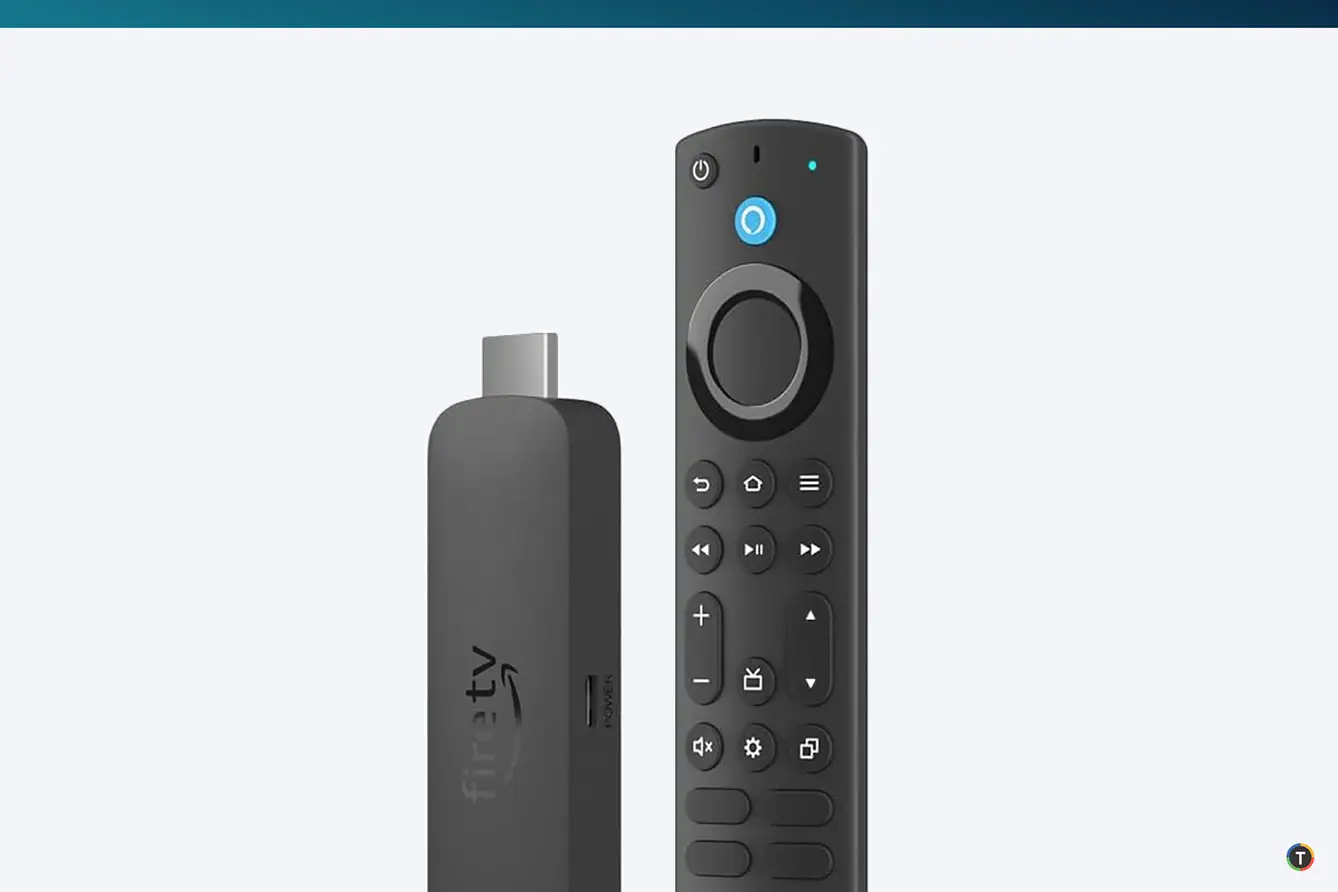
Top choice: Amazon Fire TV Stick 4K Max
For budget-conscious deployments, the latest Fire TV Stick 4K Max offers a highly affordable and plug-and-play signage solution. This compact HDMI stick supports 4K Ultra HD output with HDR (Dolby Vision, HDR10+), powered by a 2.0 GHz quad-core processor and Wi-Fi 6E connectivity for more reliable streaming.
It's ideal for small businesses or internal communications where simplicity and cost savings matter more than high-end performance. Setup is as simple as plugging it into a display and connecting to Wi-Fi, and you can install a cloud-based signage app (like TelemetryTV or others from the Amazon Appstore) to get your content up and running quickly.
Keep in mind that while it’s great for basic slideshows and videos, it’s not intended for heavy interactive content or rigorous 24/7 operation (continuous use can lead to higher maintenance due to potential overheating or resets). For its price, however, the Fire TV Stick 4K Max delivers impressive value by bringing 4K signage capabilities to virtually any modern TV or monitor.
Pros:
• Ultra-Low Cost: One of the most affordable digital signage players available (around $50), making it easy to deploy multiple units without breaking the budget.
• Easy Setup: Plugs directly into an HDMI port and is ready to use within minutes – perfect for non-technical users and rapid deployment.
• 4K Support: Unlike earlier cheap sticks limited to 1080p, the 4K Max outputs up to 4K resolution with HDR, ensuring your content looks crisp and vibrant on UHD displays.
Cons:
• Not 24/7 Hardened: Designed as a consumer streaming device, it isn’t built for uninterrupted round-the-clock use. Continuous operation could lead to overheating or system hangs, increasing downtime and maintenance needs over time.
• Limited Storage & I/O: With only ~8GB of internal storage and no expandable drive bay, content caching is limited. It also lacks Ethernet (Wi-Fi only) and multiple outputs – you can drive only one screen and must rely on wireless networking (a potential con for installations requiring rock-solid connectivity).
• Basic Controls: The device is controlled via a remote or mobile app – there’s no native touch or kiosk mode without additional management. Also, being tied to Amazon’s Fire OS ecosystem means you might need to manage settings (like disabling sleep or ads) to better fit signage usage.
In summary, the FireTV Stick 4K Max offers a viable solution for businesses seeking affordable digital signage players for limited-scale deployments.
Pricing Tier: $
Purchase Links: FireTV Stick 4K Max on Amazon
Best Raspberry Pi Digital Signage Player
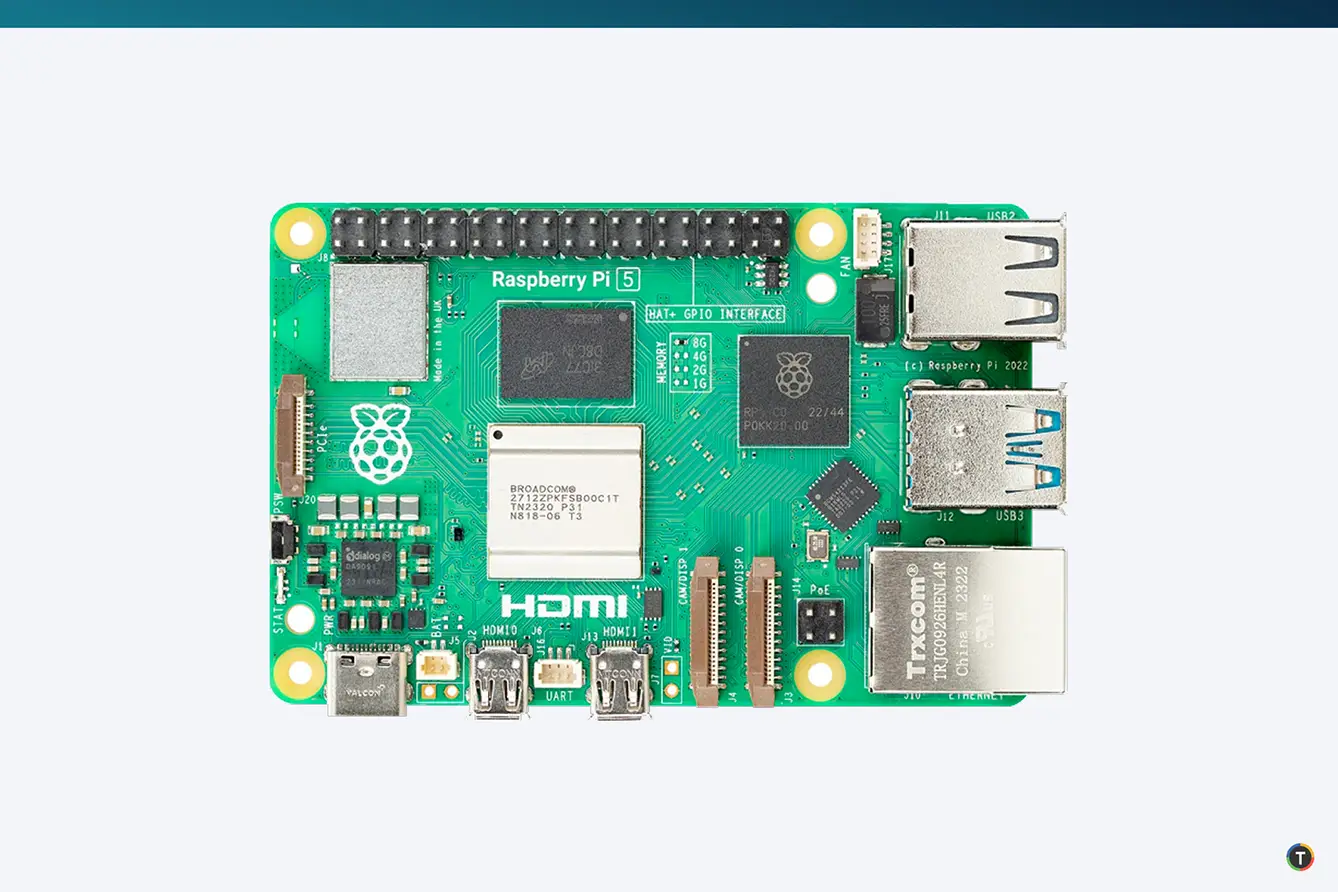
Top choice: Raspberry Pi 5
The Raspberry Pi 5 is a major leap in performance for the beloved single-board computer, making it an excellent entry-level digital signage player for 2025. Released in late 2023, the Pi 5 packs a 2.4 GHz quad-core ARM Cortex-A76 CPU and a VideoCore VII GPU – yielding 2× to 3× the CPU and GPU performance of the Raspberry Pi 4. This means smoother transitions and playback for your slideshows and HD videos, and even the ability to handle more dynamic content or web-based dashboards with ease.
Notably, the Pi 5 comes with dual micro-HDMI outputs supporting 4Kp60 on two displays simultaneously – a big advantage for driving a couple of screens or a menu board with two panels. It offers 4GB or 8GB RAM options which help with heavier content or multiple apps. Storage is typically via a high-speed microSD card, and the Pi 5 also introduces an onboard PCIe 2.0 x1 interface for faster peripherals or even an SSD attachment (for those who want to get fancy with expansion).
This board is still wallet-friendly and physically tiny, so it’s great for mounting behind a TV. It’s best suited for small-scale or internal signage (think office dashboards, digital menus, kiosks for events, etc.), where you need decent performance on a budget. Keep in mind you’ll likely run a Linux-based signage OS on it (Raspberry Pi OS or a signage-specific distro), and some assembly is required (case, power supply, etc.), but the extensive community support makes it relatively straightforward.
Pros:
• Much Improved Performance: Significantly faster than its predecessor – up to 3× better throughput on CPU/GPU tasks – which translates to snappier content rendering and the ability to smoothly play 4K videos or more complex content.
• Dual 4K Display Outputs: Can natively drive two 4K monitors at 60 Hz via its two micro-HDMI ports, giving you affordable multi-screen signage from one device (a capability usually found in more expensive players). This is ideal for side-by-side menu boards or mirrored outputs in different areas.
• Compact and Energy Efficient: The board is credit-card sized and uses only a few watts of power. It can be easily tucked behind a display or inside a kiosk enclosure, and it won’t contribute much to your electricity bill even if left running 16+ hours a day.
Cons:
• DIY Setup: This is a bare board, so you’ll need to provide your own case, power supply, and cooling solution (passive or small fan) especially if running it in warm environments or driving two 4K videos (the Pi 5 runs hotter than earlier models under load). Assembling and configuring the software requires a bit of technical know-how, which might not be ideal for non-technical users.
• Storage Reliability: By default, it uses a microSD card as its boot drive. While affordable, SD cards can be less reliable for intense read/write over long periods (though the Pi 5 supports high-speed modes for better performance). To mitigate this, invest in a high-endurance SD card or use the PCIe slot to attach an SSD for improved longevity.
• Not Commercial-Grade Out of the Box: Unlike purpose-built signage players, the Pi doesn’t come with features like a metal chassis, watchdog timers, or remote management by default (these would rely on your software solution or additional hardware).
In conclusion, the Raspberry Pi 5 is an excellent choice for businesses seeking a cost-effective, energy-efficient, and versatile digital signage solution for simple use cases. With its upgraded performance and customizable nature, it stands as a reliable option for engaging and effective digital signage displays.
Pricing Tier: $$
Purchase Link: Raspberry Pi 5 (look for the reseller list)
Best Chromebox Digital Signage Player
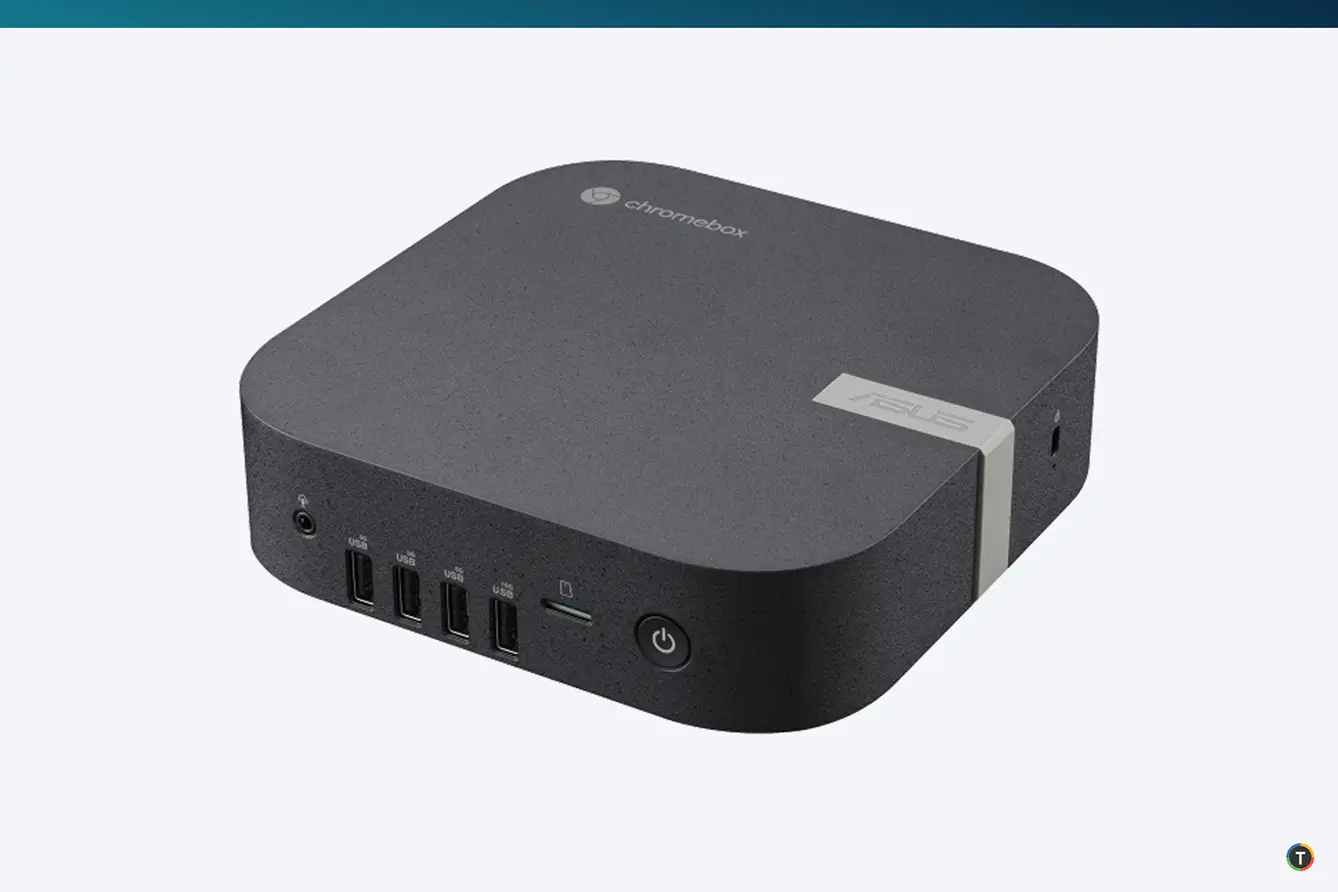
Top choice: ASUS Chromebox 5a
For organizations standardized on Chrome OS or those who value Google’s ecosystem, the ASUS Chromebox 5a is the latest high-performance Chromebox. This mini PC is a slight refresh of the Chromebox 5, now featuring up to 13th Gen Intel Core processors (Intel Core i7-1355U at the high end). It’s built to handle more demanding content and multiple displays while offering the simplicity and security of Chrome OS (including easy device management via Chrome Enterprise tools).
The Chromebox 5a is equipped with ample DDR5 RAM and fast NVMe SSD storage options, enabling smooth 4K video playback, animations, and even light interactive content. It retains a compact form factor that can be mounted behind displays. Notable is its support for multiple concurrent 4K outputs (it has dual HDMI 2.1 ports and a USB-C port for display, allowing at least three screens, and the previous model supported up to four 4K displays with an additional Thunderbolt/DP port). This makes it a great choice for video walls or menu boards that require a single player driving several screens.
The connectivity suite is robust: you get Wi-Fi 6E, Bluetooth 5.3, and wired Gigabit Ethernet for network, plus a variety of USB ports for peripherals. One thing to note is that ASUS slightly altered the hardware mix in the 5a model: compared to 2023’s Chromebox 5, the new 5a drops the Thunderbolt 4 port and 2.5GbE LAN (likely in favor of cost savings) and instead offers more USB 3.2 ports and just the standard 1Gb Ethernet.
Pros:
• Chrome OS Convenience: Features a lightweight, secure Chrome OS that updates automatically. It’s ideal for organizations utilizing Google's admin console, offering the ability to run fullscreen kiosk apps and manage devices remotely with Chrome Enterprise.
• Powerful Hardware: Equipped with Intel's 13th Gen U-series CPUs (up to Core i7) and DDR5 memory, ensuring robust performance for high-resolution videos and animations. Designed with advanced thermal management to maintain cool and stable operation under continuous use.
• Multi-Display Capability: Supports multi-screen setups with two HDMI outputs and one USB-C display port, capable of driving up to three 4K displays simultaneously. Perfect for large video walls or menu boards requiring a single player to manage multiple outputs.
Cons:
• Short ChromeOS Lifecycle: The Auto Update Expiry (AUE) date set by Google limits the device to approximately 8 years of updates, potentially increasing total cost of ownership as devices need replacing post-AUE.
• Reduced I/O Options: The latest model removes Thunderbolt 4, reducing options for high-speed external peripherals and multi-display daisy-chaining. Also, the downgrade from 2.5 Gb Ethernet to 1 Gb Ethernet may affect scenarios requiring high-speed network transfers.
• Chrome OS Limitations: Restricted to web-based and Android apps, limiting options if specific applications are needed. While generally capable, the reliance on cloud connectivity means offline content availability can vary, potentially complicating deployments without consistent internet access.
Despite the trade-offs above, ASUS Chromebox 5a remains a top-tier Chrome OS device for signage, delivering reliable 24/7 performance and easy content deployment via Chrome OS’s kiosk mode or Android apps. Businesses that use Google Workspace or Chrome device management will find this player especially convenient to deploy and secure.
Pricing Tier: $$$
Purchase Link: ASUS Chromebox 5a
Best Touch Screen Tablet for Digital Kiosks
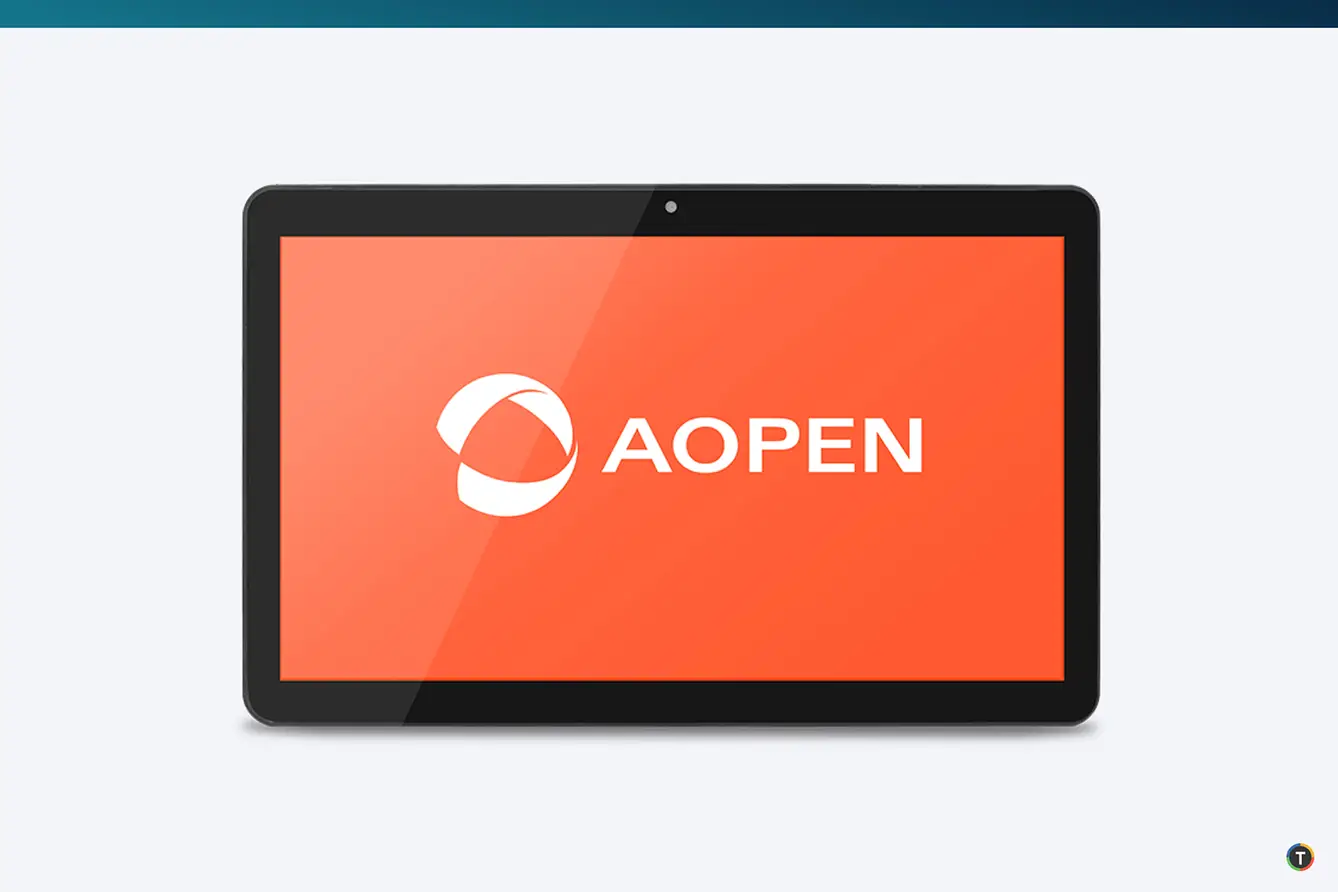
Top choice: AOPEN cTILE 22 Gen3
When you need an all-in-one touchscreen for interactive kiosks or signage, AOPEN’s cTILE 22 Gen3 is a standout choice. This device is essentially a 22-inch Full HD (1080p) touch screen with a Chromebox built into it – a commercial-grade Chromebase designed for 24/7 use in public settings. The cTILE 22 Gen3 is powered by an Intel Alder Lake-P Celeron 7305 processor (fanless design) along with 4GB RAM and a 64GB SSD, running ChromeOS. It’s specifically engineered for kiosk applications: the front panel is IP65-rated (dust and water resistant) to handle exposure in high-traffic or even semi-outdoor environments, and it features a tamper-proof design (hidden controls and covered ports) to prevent the public from interfering with the device.
The 21.5-inch touchscreen supports 10-point PCAP touch (even glove touch for medical or industrial use), making it ideal for self-service tasks like self-checkout counters, interactive directories, ticketing kiosks, museum information displays, or restaurant self-ordering stations. Under the hood, it’s essentially integrating the guts of AOPEN’s Chromebox Commercial 3, so it has modern connectivity like dual-band Wi-Fi 6, Bluetooth 5, and Gigabit Ethernet for networking, plus multiple USB ports. It even includes an HDMI output, so you can drive a second display (mirrored content or extended desktop) if needed – for instance, showing a customer-facing display alongside a touch interface. Being a Chrome OS device, it can be managed remotely and kept up to date easily.
Pros:
• All-in-One Convenience: Combines a touchscreen monitor and media player into a single, neatly integrated unit, simplifying installation and minimizing clutter. This integration reduces points of failure and ensures a tidy setup.
• Rugged, Commercial-Grade Build: Built for public environments with an IP65-rated front panel for dust and spill protection, and a robust metal chassis designed for continuous operation. Features fanless cooling for silent operation and enhanced durability.
• Multi-Purpose Screen: The 22-inch display hits the sweet spot for digital signage, providing sufficient size for both signage and interactive use without straining the GPU, which aids in longevity and maintains content clarity.
Cons:
• Higher Initial Cost: The integrated, commercial-grade components make it pricier than separate solutions, potentially placing it out of reach for small businesses on a budget.
• 1080p Resolution Only: The Full HD resolution may not deliver the sharpness of higher DPI displays found in consumer devices, which could be a drawback for detailed content or close-up interactions.
• Limited OS/Software Flexibility: Running solely on ChromeOS, it limits software options to web or Android-based applications, posing potential challenges if specific applications aren't supported. Additionally, dependency on Google’s AUE policy could limit the device's lifecycle.
Overall, the AOPEN cTILE 22 Gen3 provides a turn-key interactive signage solution: you get a durable touchscreen and a reliable media player in one, saving you the hassle of pairing a separate tablet with a mount or worrying about consumer tablets overheating in kiosk enclosures.
Pricing Tier: $$$
Purchase Link: AOPEN cTILE 22 Gen3
Best Windows Digital Signage Player
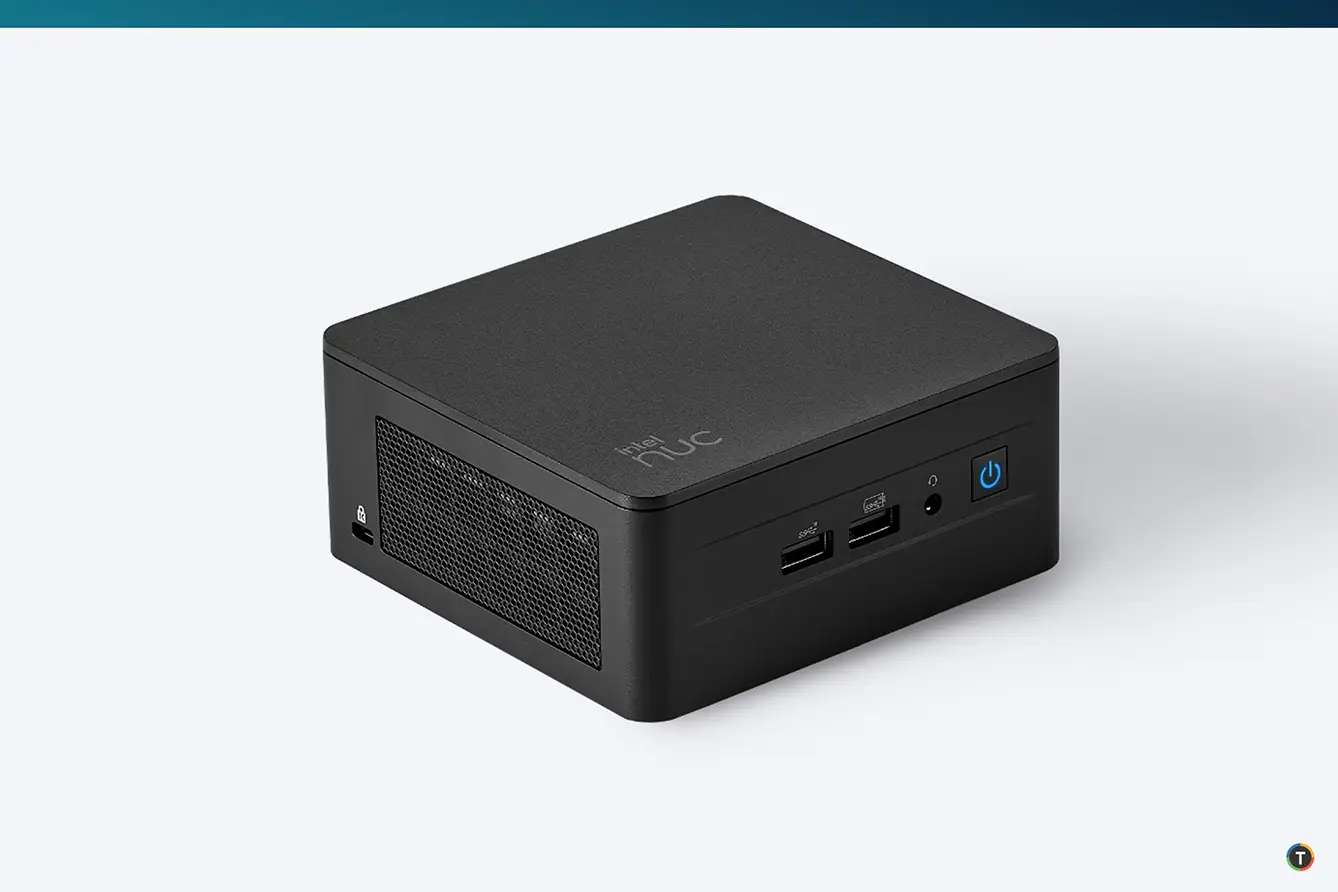
Top choice: Intel NUC 13 Pro (Arena Canyon)
The Intel NUC 13 Pro is our top pick for a Windows-based digital signage player, especially for those needing high performance and versatility. This is a 4×4-inch mini PC that packs a 13th Gen Intel Core processor (up to Core i7-1360P with 12 cores/16 threads) and is built to enterprise standards. The device is validated for 24/7 operation, meaning it can handle continuous signage playback without issue. The NUC 13 Pro is capable of driving complex, dynamic content – from smooth 4K videos to HTML5 content to computer-vision or AI-enhanced signage – thanks to its potent CPU and integrated Intel Iris Xe graphics.
One of its standout features is the ability to support multiple displays: it offers dual HDMI 2.1 ports and dual Thunderbolt 4/USB-C ports, which in total can output to as many as four 4K screens simultaneously (for example, a 2×2 video wall, or menu boards for four restaurant screens from one unit). Out of the box, it has every connectivity option you might need: 2.5 Gigabit Ethernet for fast, reliable networking, Wi-Fi 6E and Bluetooth 5.3 for wireless connections, and plenty of USB ports for peripherals or content loading.
Being a Windows device, you have the full flexibility of the Windows 10/11 ecosystem – you can run any signage software or even standard web browsers, and integrate with domain networks or enterprise management tools. The NUC’s small form factor means it can be mounted behind a display or tucked into a cabinet easily, and it typically includes VESA mounting brackets for convenience.
Pros:
• High Performance in a Small Package: The NUC 13 Pro delivers desktop-level performance, handling 4K60 video on multiple displays and intensive software with ease, supported by Intel’s vPro for added reliability.
• Multiple 4K Display Support: Capable of driving a video wall or multiple displays with two HDMI 2.1 and two Thunderbolt 4 ports, supporting up to four 4K displays simultaneously, which is cost-effective for complex setups.
• Maintenance and Reliability: Known for its solid build and quiet operation, the NUC is designed for 24/7 use with upgradeable components and remote management capabilities for enhanced reliability.
Cons:
• Cost: Priced between $600–$800+, this premium device's cost may be prohibitive for simpler setups or large-scale deployments where a lower-cost player could suffice.
• Setup and Complexity: Requires initial configuration for kiosk mode, regular updates, and Windows licensing management, demanding more IT involvement than plug-and-play solutions.
• Windows Maintenance: Regular OS updates and maintenance are needed to ensure smooth operation, requiring ongoing IT oversight to maintain security and functionality.
In practice, using a NUC 13 Pro for signage gives you desktop-class performance in a tiny, energy-efficient box, which is excellent for high-profile installations (like large retail video walls, interactive museum exhibits, or corporate lobby displays) where you don’t want to worry about hardware limitations. It’s also a reliable workhorse for running heavy content or multiple content zones per screen.
Pricing Tier: $$$$
Purchase Link: Intel® NUC Pro
Best Linux Digital Signage Player
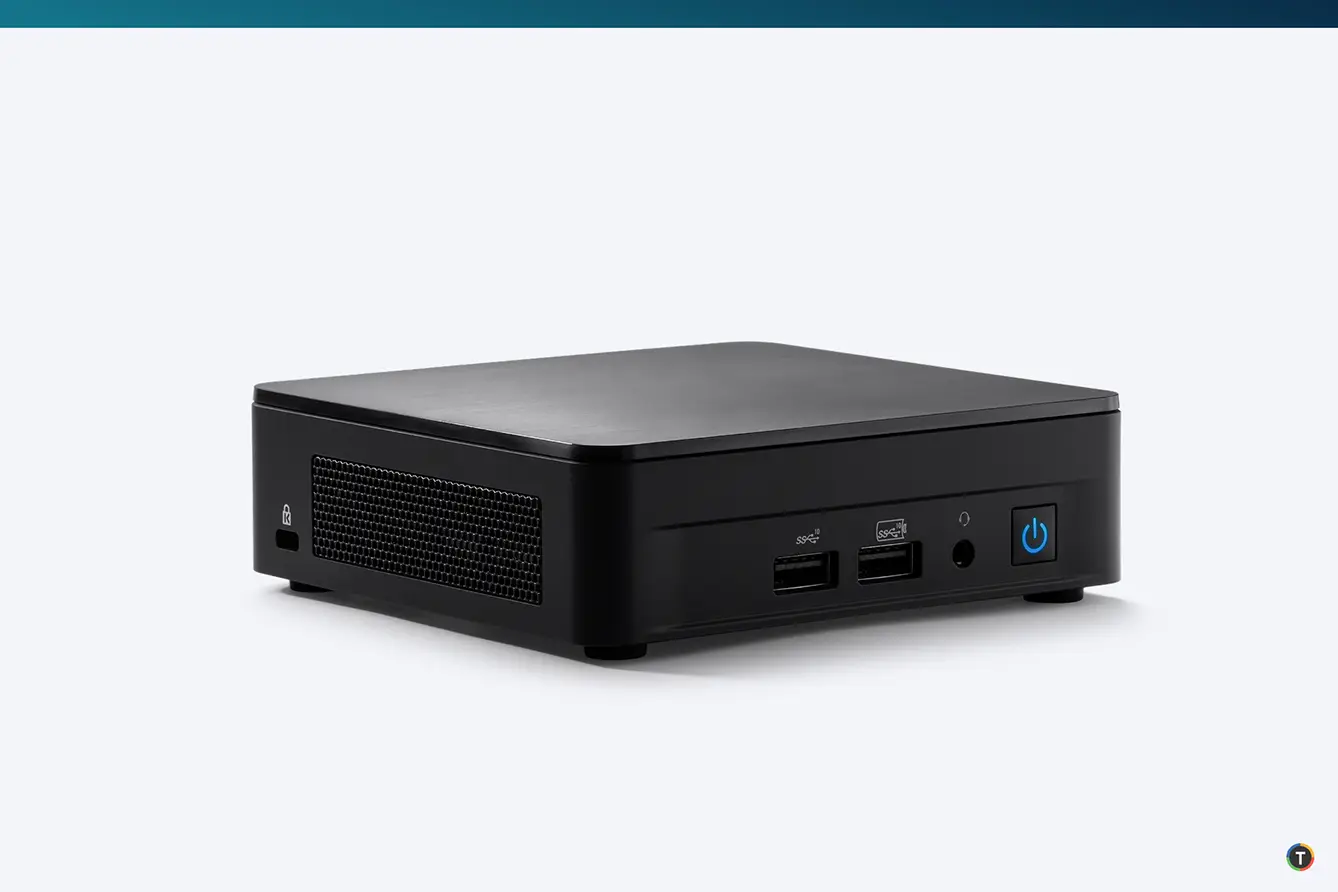
Top choice: Intel NUC 13 Pro (with Linux)
Here, we would again recommend the Intel® NUC Pro device as it excels when paired with Linux-based operating systems, notably the widely-used Ubuntu, catering to those businesses who prioritize tailored digital signage deployments. It is important to note that leveraging the full potential of this setup necessitates a comprehensive understanding of Linux systems, alongside a commitment of time for meticulous provisioning.
In this context, the TelemetryTV's digital signage software emerges as an indispensable tool. Its prowess lies in streamlining content management and automating device provisioning on a large scale, effectively reducing administrative workload significantly. This combination of Intel® NUC Pro and TelemetryTV is particularly advantageous for organizations with advanced Linux proficiency, aiming to optimize their digital signage infrastructure.
Pricing Tier: $$$$
Purchase Link: Intel® NUC Pro
Best Apple Digital Signage Player
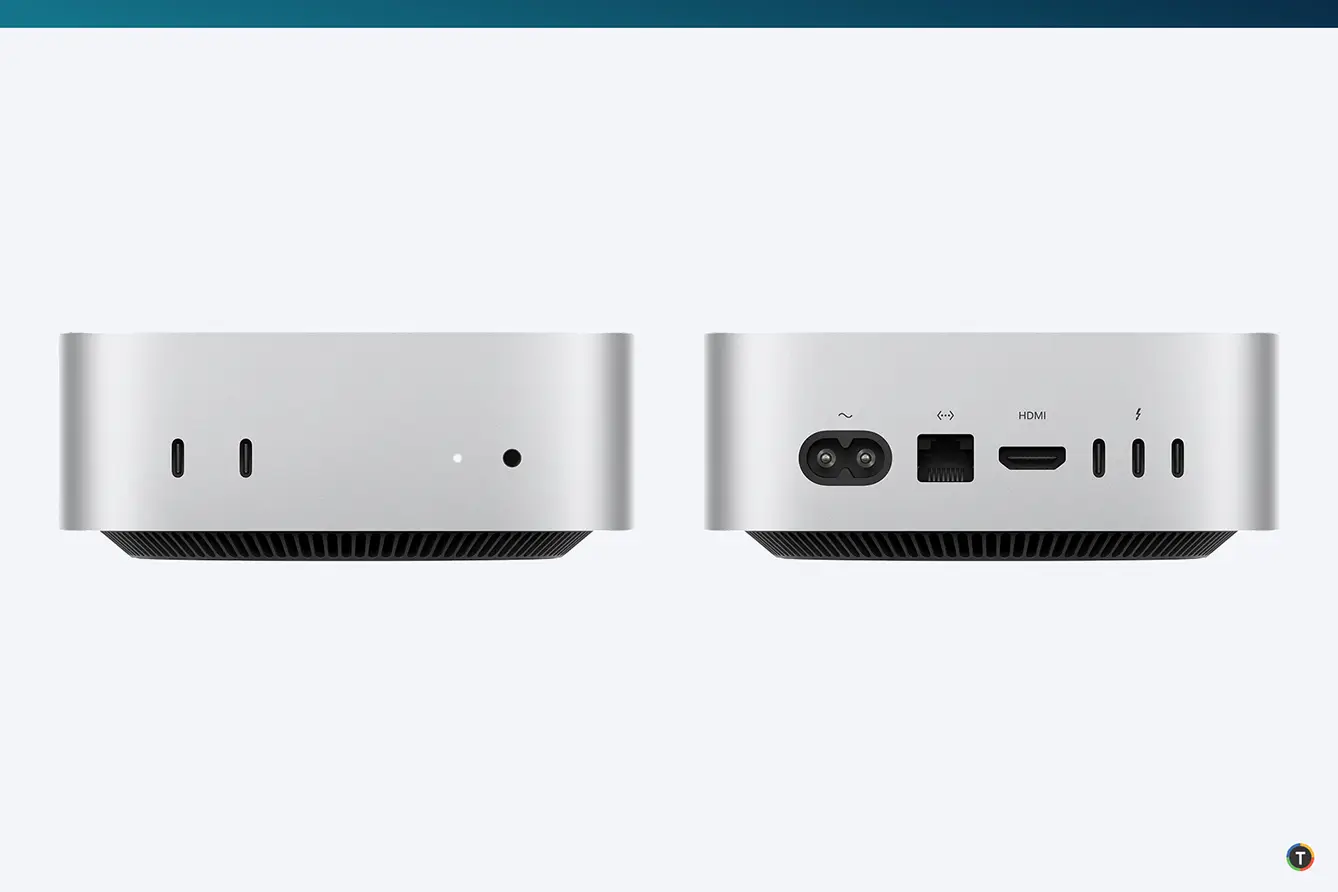
Top choice: Mac mini
The Mac mini is an easy choice for the best digital signage player, especially for Apple enthusiasts. It's a true powerhouse for digital signage, thanks to its Apple Silicon. This device stands out even for the most computing resource-demanding digital signage applications. Its compact design belies its robust performance, making it an excellent option for businesses requiring high-quality display outputs.
The latest Apple Mac mini features the powerful M4 and M4 Pro chips, making it an exceptional choice for high-end digital signage applications. The M4 models are equipped with a 10-core CPU and GPU, while the M4 Pro variant offers up to a 12-core CPU and 16-core GPU, both with hardware-accelerated ray tracing and a 16-core Neural Engine. This advanced hardware supports intense graphic workloads and multiple high-resolution displays, ideal for dynamic digital signage setups.
Pros:
• High Performance: Capable of handling complex, resource-intensive media with ease.
• Extensive Display Support: Can drive multiple high-resolution displays, suitable for sophisticated digital installations.
• Advanced Media Capabilities: Supports a wide range of video and audio formats with specialized hardware acceleration.
Cons:
• Premium Price: High cost, especially for configurations with enhanced memory and storage options.
• Limited Upgradeability: Fixed hardware specifications post-purchase mean it’s crucial to select the right configuration upfront.
In conclusion, the Mac mini with Apple Silicon is a top-tier choice for businesses seeking a reliable, high-performing digital signage solution. Its ability to support multiple high-resolution displays, combined with its energy efficiency and robust performance, makes it a worthwhile investment, especially for those already within the Apple digital signage ecosystem.
Pricing Tier: $$$$
Purchase Link: Mac mini
Best All-in-One Digital Signage Solution
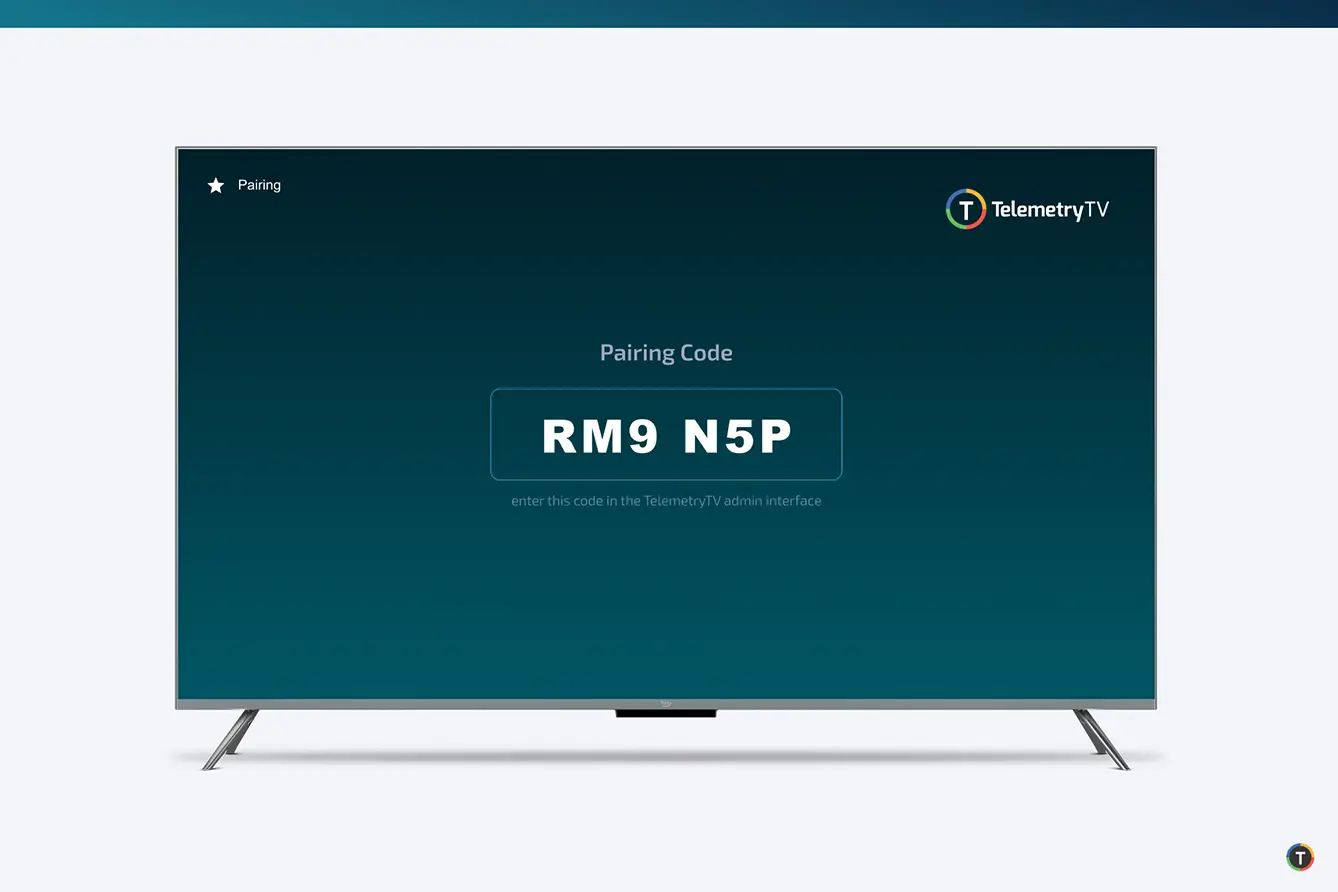
Top choice: Amazon Fire TV Omni Series
The Amazon Fire TV Omni Series integrates a smart 4K TV with built-in Fire TV capabilities, offering a seamless all-in-one solution for digital signage. Ideal for budget-conscious and internal communication needs, these TVs eliminate the requirement for separate media players. The latest models, including the Omni QLED and Mini-LED series, come in sizes ranging from 43" to 85", featuring up to 1,344 local dimming zones and a peak brightness of 1,400 nits. They support advanced HDR formats like Dolby Vision IQ and HDR10+, ensuring vibrant and clear display even in bright environments.
Setup is straightforward—when used together with the TelemetryTV digital signage software, the screen can be split into multiple content zones, each displaying different types of content such as announcements, live streams, weather updates, schedules, and more. This feature is particularly beneficial in settings where diverse information needs to be displayed simultaneously.
In terms of connectivity, the Fire TV Omni Series is equipped with a variety of ports, including HDMI, USB, and more, offering flexibility in connecting different content sources and peripherals. This versatility is crucial in a business environment where varying types of media might need to be displayed. Despite its many advantages, the Fire TV Omni Series does have some limitations. As this device is primarily designed for home usage, it is not intended for continuous 24/7 operation. However, this can be resolved with TelemetryTV's auto power on/off capabilities.
Pros:
• Integrated Solution: Combines a high-quality screen and media player in one device, reducing setup complexity and hardware requirements.
• High-Quality Display: Offers sizes up to 85" with QLED technology, providing excellent visibility and color quality for all types of content.
• Cost-Effective: More affordable than comparable professional signage setups, making it accessible for a variety of business environments.
Cons:
• Consumer-Grade Hardware: Not designed for the rigors of around-the-clock commercial use, which may affect longevity and durability.
• Limited Professional Control: Lacks robust kiosk mode controls and may display the Fire TV interface briefly upon startup.
• Dependent on Connectivity: Relies heavily on an internet connection for functionality, which could be limiting in spaces with unstable network access.
In conclusion, the Amazon Fire TV Omni Series represents a practical and efficient solution for digital signage in business environments, particularly in internal communication use cases. Its large choice of display size options, integrated media player, and content flexibility make it a valuable asset, despite some limitations in picture and audio quality.
Pricing Tier: $$
Purchase Link: Amazon Fire TV Omni Series
Selecting the Best Digital Signage Screen
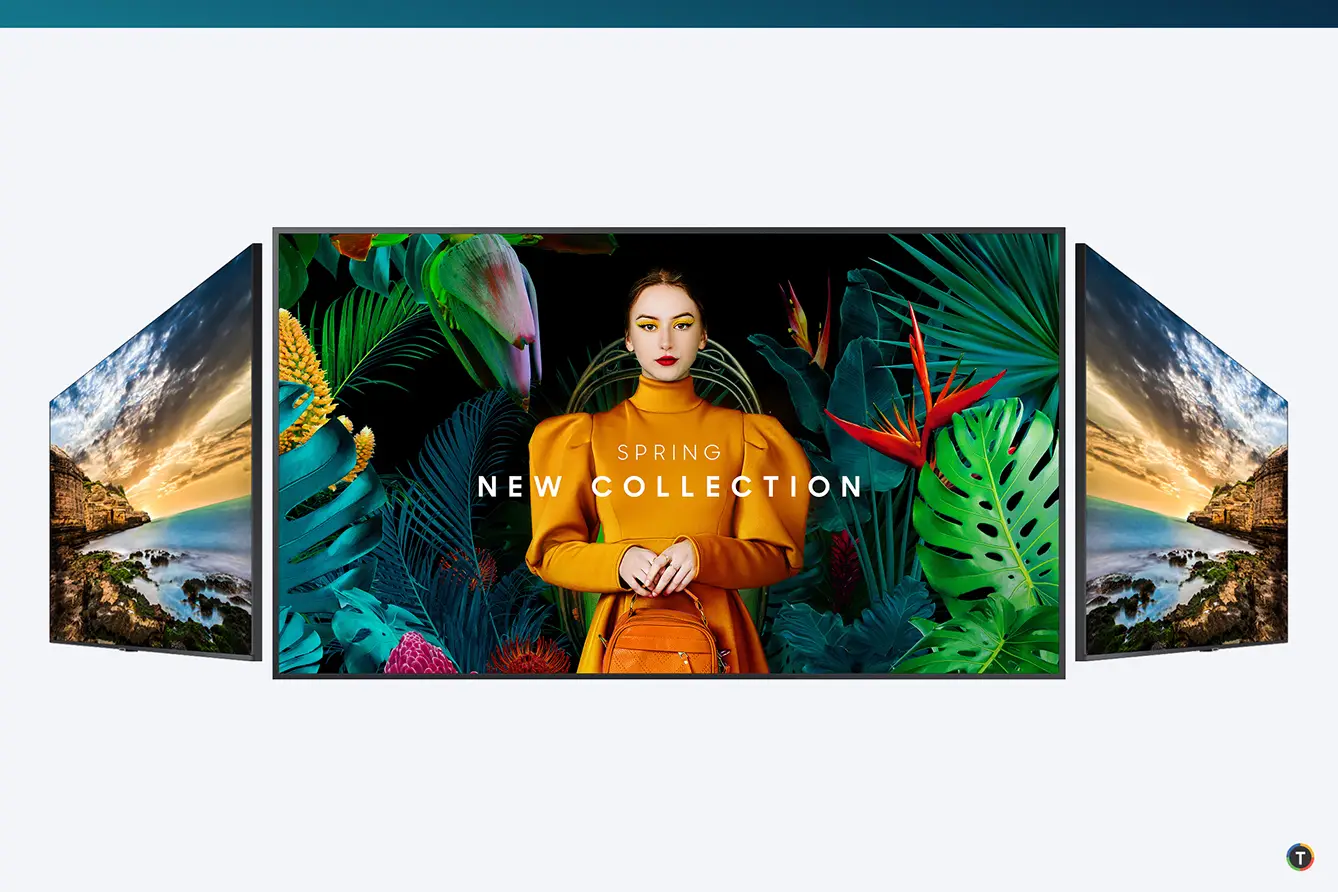
The cornerstone of selecting an appropriate digital signage screen lies in a thorough analysis of your requirements. Key considerations include the nature of the content, the characteristics of the installation environment, and the intended duration of use. For instance, displays in educational or corporate settings demand versatility to handle a range of content, from 4K videos to interactive applications. In contrast, displays for advertising networks, particularly in remote locations, should prioritize durability, theft protection, and ease of remote management.
The operational duration of the display is a critical factor. Consumer-grade displays are typically designed for up to 8 hours of daily use and may suffice for less intensive applications. However, for round-the-clock operations, professional-grade displays are indispensable. They are engineered for prolonged use, offering enhanced durability and longer warranty periods, thus ensuring reliability and cost-effectiveness in the long run.
Diverse Display Options for Digital Signage
Digital signage displays are diverse, each catering to specific scenarios:
• Professional TVs: Specifically crafted for digital signage, these displays are built for extended use (16/7 or 24/7), offering superior build quality, brightness, and adaptability for outdoor use.
• Tablets: Best suited for interactive settings or close-viewing scenarios, such as kiosks or product displays in retail environments.
• Monitors: Ideal for cost-effective content display in the 17-32 inch range. Beyond this size, TVs become more economical and practical.
• Non-smart TVs: Budget-friendly options for large screens, requiring external media devices to function as digital signage.
• Smart TVs: All-in-one solutions with built-in computing capabilities. It is crucial to evaluate their performance specs, as some may underperform or operate on outdated systems.
Making the Informed Choice
Commercial-grade TVs are specifically designed for digital signage, but advancements in technology have made high-quality consumer-grade TVs suitable for professional setups as well. Ultimately, you should choose a display that aligns with your operational needs, ensuring effective content delivery and long-term durability in your specific business context.
You can find our top picks for different display options by reading our comprehensive guide to choosing digital signage screens.
The Most Advanced Digital Signage Player Operating System
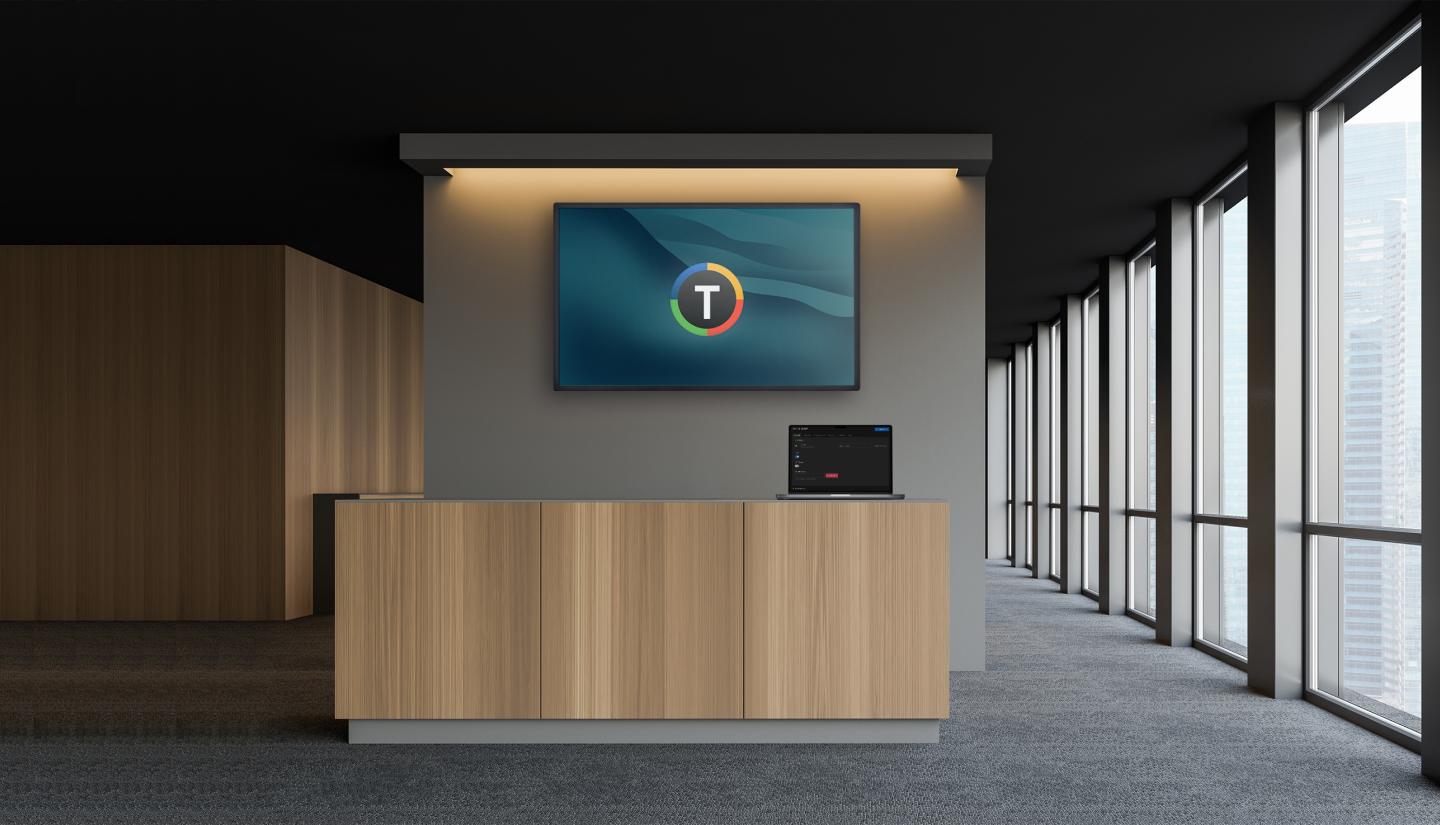
TelemetryOS is a digital signage-first operating system optimized for high-definition videos, web apps, network stability, and minimal total cost of ownership. Over 80% of TelemetryTV’s new customers choose TelemetryOS as their preferred system for running TelemetryTV—including Databricks, Chopt, and UC Berkeley.
TelemetryOS Advantages
While the TelemetryTV application offers comprehensive features and high performance across all its supported platforms, TelemetryOS, purpose-built for media players, has some large advantages over Android, ChromeOS, Windows, MacOS, or PWAs:
Low TCO
Our user data shows TelemetryOS reduces downtime by 67% and requires 56% less time spent on device maintenance due to automatic security patching and software updates compared to other OSs.
Stability and Security
TelemetryOS is a stripped-down and hardened version of Ubuntu 20 LTS, a secure and stable OS offering extended support until 2030 and no artificial obsolescence. Its lean architecture and small surface area ensure high performance on inexpensive hardware.
Turnkey Hardware
TelemetryOS comes available on a variety of hardware, including PC sticks, media player boxes, and RPi-powered TVs that come bundled with TelemetryOS for fast and easy provisioning of many devices at once. You can also self-install an image on an Intel or RPi mini PC with an ISO installer.
Exclusive Features.
TelemetryOS enables advanced features like AI audience analytics for DooH advertising, USB and GPIO access via SDK, GUI for network connectivity configuration, IPTV, live video streaming, and custom web app SDK.
Consider using TelemetryOS for your digital signage deployments to cut down your network's total cost of ownership, get exceptional performance, enterprise-grade security and stability, and access features not available with other operating systems.
Powerful and Intuitive Cloud-Based Digital Signage Software
After selecting the optimal digital signage player option, the next critical step is to equip it with software that is not only powerful and reliable, but also simplifies device provisioning and maintenance, especially for large-scale business environments.
That's where TelemetryTV comes in. With TelemetryTV's multi-platform support, you can connect any option from this guide knowing that TelemetryTV will work perfectly with the device.
TelemetryTV's Device Management Capabilities
Real-Time Device Health & Stats Reporting
This feature provides immediate insights into the health and performance of each signage player. Access critical statistics like CPU and cache usage, along with error logs. Receive email alerts if devices go offline, ensuring you can respond quickly and reduce interruptions, enabling proactive maintenance and ensuring optimal performance of your digital signage network.
Automatic Device Provisioning
With the ability to automatically provision tens to thousands of devices simultaneously, TelemetryTV significantly reduces the time and effort required to set up and expand your digital signage network. This feature is particularly beneficial for large-scale deployments, ensuring consistency and efficiency across all devices.
Serial Port Commands (RS-232 & HDMI CEC)
This feature enables users to schedule and trigger essential hardware events such as powering displays on or off, adjusting volume, and selecting inputs. You can change input sources remotely. You can schedule your screens to power on or off at specific times, aligning with business hours or content schedules. You can make volume adjustments remotely, ensuring the audio levels are always appropriate for the setting and time of day.
Other Capabilities
Explore TelemetryTV's device management tools further by watching this video.
Explore Digital Signage Solutions
Discover the power of seamless digital signage with our intuitive platform. Perfect for businesses of all sizes, our tools make it easy to manage and display content effectively.
Start for Free